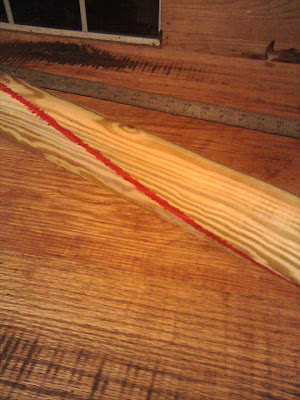Great day in the morning but these are nice.
Brand new hand forged hold fasts (and is that one word or two?) from master blacksmith Peter Ross, late of Colonial Williamsburg and acknowledged as one of America's great artisans. If you want to see iron work that will make your jaw drop, drop by his website:
There are several more or less successful attempts at a factory made holdfast on the market. There is even a typically over-engineered one that uses a threaded screw to provide downward pressure, so it's really more of a benchtop downward acting vise than anything. Some of the true friction-action holdfasts have a bad reputation for fracturing under repeated use - that will never happen with these beauties. You hold them in your hand and you just know that 150 years from now they'll be on somebody's bench - maybe a great great grandson or daughter if you're lucky and raise 'em right.
Of course you know how they work. There is a 3/4" hole drilled in the bench top, or in the skirt boards, and into it you drop the holdfast. Whack it down with a couple of mallet blows, and friction works its magic. To release, just whack the back, behind the bend, and it's free. Simplicity itself. Needs no lubrication. Y2K compliant.
In the skirt board, they provide amazing holding power. One end of the board in the vise or under the planing hook and the other under a holdfast and you're good for all the planing you'd ever need to do. When finished, whack it and you're outa there.
They cost a good bit more than the rinky dink factory jobs, but there comes a time in a person's life when they've had enough of rinky dink and want to have something solid and beautiful and basically perfect in their kit, something that will last 200 years of daily use, for the price of a couple of dinners out.
Peter's standard model is made for a 7/8" hole - I got the 3/4" by request because I already had the holes drilled for the small Jorgensen bench stops discussed earlier. Even scaled down slightly, they are massive and I can't imagine any need for a larger model unless you're holding down really massive work pieces.
To my chagrin, I waxed some of the holes to make the bench stops easier to turn and to insert and remove, and now they are completely useless for holdfast use and will not grip, no matter what. So let that be a lesson to you - don't wax your bench holes if you want to use these puppies or you'll be sad.
And to all those of you facing an onslaught of post modernist, over engineered frippery in the workshop, I have two words of advice for you, courtesy of Patrick O'Brian:

















































